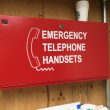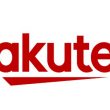The sky’s the limit
Located in Houma, La., Terrebonne General Medical Center (TGMC) is a public, nonprofit healthcare system consisting of a 321 licensed bed acute care facility with a range of services, such as a women’s center, cancer-care services, outpatient surgery center, diagnostic imaging services, women’s diagnostic and breast imaging center, inpatient and outpatient rehabilitation, emergency care services, and a community outreach center.
The center — which in 2007 received the HealthGrades Distinguished Hospital Award for patient safety — had deployed a wireless network with 87 access points several years ago, which was used for laptop access to its network. However, the access-point manufacturer was acquired by a competitor of wireless network vendor that had deployed the network. As a result, we no longer could purchase those access points, which prevented the center from further building out its network.
We knew that wireless was going to become an increasingly critical capability for TGMC; for instance, our plans for a new application deployment would require new network capabilities. Faced with having to replace our entire wireless infrastructure, we evaluated our alternatives, looking at both the wireless infrastructure cost and the cost of peripheral equipment that would be needed to implement our planned monitoring, tracking and voice applications. We chose a Meru Networks virtualized wireless LAN as our network foundation and worked closely with the vendor to deploy the network based on best practices.
Our initial goal was to deploy temperature monitoring in key departments of the medical center, but as we worked with our new network infrastructure, we found that we could do a lot more than we ever expected.
We planned to implement innovative applications — such as temperature monitoring and asset-tracking — that would increase efficiency and productivity for nursing, engineering and security staff. We also have a proprietary voice system that soon will reach the end of its life, and we wanted to replace and expand our mobile voice capabilities. We needed toll-quality voice and seamless roaming, especially for nursing and engineering staff.
The medical center’s pharmacy, dietary, and lab departments rely on the wireless network for temperature monitoring on 150 devices. We use Newbury RFID tags and Omnicell medication and supply-automation solutions to help ensure that medication, lab chemistry and food temperatures are in compliance with regulatory requirements. In the past, nursing staff had to manually check temperatures on medication refrigerators, freezers and warmers on every hospital floor, twice daily.
Manual checking took more than an hour each time. Today, we centrally monitor all temperature-controlled units and receive automatic alerts when temperatures exceed programmed thresholds.
Meanwhile, our dietary department remotely monitors refrigerators and freezers on hospital floors to ensure that ice cream, drinks and snacks for patients are maintained at the correct temperatures. In addition, TGMC’s public blood bank draws blood daily and keeps it at a specific temperature, and the hospital’s lab ensures that all temperature-sensitive lab tests are monitored.
Staff members simply go to a Web-based dashboard to generate their reports in just minutes. Our staff estimates that the wireless monitoring saves 700 man-hours per year, and hospital administration determined that the savings from wireless monitoring will pay for the application within two years.
We are presently operating a pilot program with nursing staff to replace more than 300 proprietary wireless phones with handsets that operate using session initiation protocol (SIP) signaling. SIP phones provide us with the traditional calling features of a telephone and enable new features, such as instant messaging, presence and file transfer, as well as the ability to send and receive multimedia communications such as video and videoconferencing. When fully implemented, we expect to use about 400 SIP phones and expand our wireless voice capabilities to engineering and security staff. SIP phones will eliminate walkie-talkies by providing push-to-talk features that will increase convenience and productivity for these teams.
At TGMC, we have few hospital-based physicians, so our physicians have their own mobile phones, laptops and PDAs. We enable all of our physicians to use their mobile phones on our wireless network, which allows them to access patient information and even sign documents in some applications. Physicians can use their personal mobile phones anywhere in the hospital and time spent walking between floors is often used for dictating notes. The network easily handles everything the hospital staff and patients need, and with high performance.
The network also supports computers on wheels for nursing staff. Today, nurses have the entire day’s patient data and medications at their fingertips, no matter where on the floor they are working.
TGMC’s catheterization laboratory also uses the wireless network to collect electrocardiogram data. Technicians with mobile carts simply push buttons on the EKG unit to download the patient information and perform an EKG. Data is reconciled automatically with the patient’s information and delivered wirelessly to the server, where physicians can review it easily. This application operates seamlessly over the wireless LAN and eliminates the need for technicians to type, which accelerates responsiveness for the care-giving team.
There is a long list of interesting wireless applications that we plan to deploy over the next several months to a year, mostly due to the fact that we now have a virtualized, mission-critical wireless LAN on which we can depend. RFID tags will allow our pharmacy to pre-program medications and formularies for each patient and deliver the information wirelessly to medication carts. This application will help increase productivity and continuously safeguard against medication errors.
Our biomed department soon will eliminate the daily headache of tracking down IV and PCA pumps for cleaning. Because it is difficult to find all of the pumps, we have to make sure that there are many more pumps in inventory than are actually needed, in order to ensure that enough pumps are available at any given time. We also plan to extend our RFID tagging to include pumps, so that we can instantly locate every pump in inventory. This will reduce our labor and equipment costs, because we can reduce the number of pumps needed in inventory. A similar application also will help us solve another equipment-tracking challenge — missing wheelchairs. Now that we have a dependable wireless networking system, our hope is to integrate the TGMC security system with asset-tracking to alert us when a wheelchair is leaving the premises.
We are now in the planning stage of moving our video security monitoring from our wired network to the wireless network in order to gain flexibility and reduce costs. TGMC has several outlying areas and a parking lot that cannot be monitored because we cannot wire it to our video surveillance system. The cost of deploying fiber to one lot alone is $12,000. With our wireless network-based video system, we can extend our security reach and eliminate the cost of fiber and extra equipment. The network also will allow us to eliminate our current standalone network for video surveillance, as we expect the virtualized wireless LAN to easily handle streaming video communications.
Literally, the sky is the limit. It’s extremely simple to add applications to this network, which manages everything. As a small hospital with only two people to manage IT, Meru’s virtualized wireless LAN, the Newbury RFID system, and Omnicell’s solutions enable us to do a lot more — far more cost-effectively and efficiently — than we can do with any other solution. And we are able to do far more than many hospitals of our size. We got a lot more for our money than we expected.
Jeff Sardella is network administrator for Terrebonne General Medical Center.
Related Stories

















